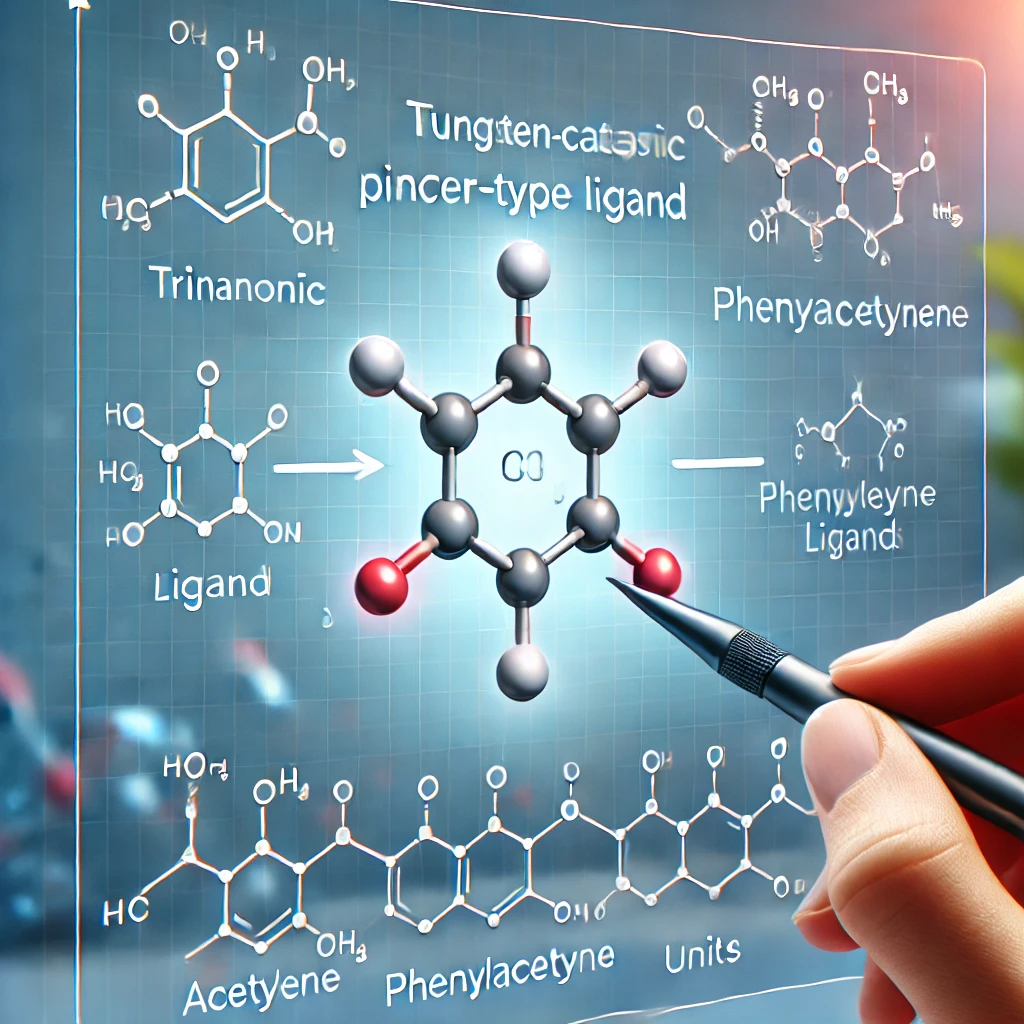Introduction to Tungsten-Based Catalysts
Catalysts are the unsung heroes of chemical reactions, particularly in the acetylene polymerization processes. Among these, tungsten-based catalysts stand out for their potential in transforming acetylenes into valuable polymers. This research focuses on a unique family of pincer-type tungsten alkylidene complexes, delving into their structure, mechanism, and efficiency in polymerization reactions. The findings presented are not just a deep dive into the mechanics of tungsten-based catalysts, but they also serve as a testament to the advances made in polymer chemistry and industrial catalysis. The applications of such catalysts have far-reaching implications, especially for companies like Oboro Labs, which specialize in innovative polymer catalysts.
Acetylene Polymerization: A Focus on Tungsten Catalysts
Acetylenes, compounds containing a carbon-carbon triple bond, can be polymerized to create a class of materials known as polyacetylenes. These polymers exhibit fascinating properties like conductivity, gas permeability, and photoconductivity. Tungsten-based catalysts have emerged as prime candidates for these polymerizations. However, they have traditionally faced limitations in terms of efficiency, selectivity, and substrate compatibility.
The research specifically addresses these challenges by introducing a family of tetraanionic pincer-type tungsten catalysts. These catalysts exhibit a high level of efficiency in polymerizing both mono- and disubstituted acetylenes, such as phenylacetylene and 1-decyne, producing polymers with promising properties.
Catalyst Structure: The Trianionic to Tetraanionic Conversion
One of the key findings of this research is the discovery of a new tetraanionic pincer-type ligand. This ligand is created from the conversion of a trianionic pincer, which plays a pivotal role in enhancing the efficiency of the tungsten catalyst. The structure of the tetraanionic ligand allows for better stabilization of the tungsten alkylidene, leading to improved catalytic performance.
Through X-ray crystallography and nuclear magnetic resonance (NMR) spectroscopy, the researchers were able to confirm the structure of the tungsten catalysts. The tetraanionic ligand features two phenolate donors and an alkylidene bridge, creating a highly stable complex that is resistant to decomposition—a significant challenge in polymerization catalysis.
Applications and Future Directions
These findings hold great promise for industrial applications. The ability to polymerize acetylenes more efficiently opens up a world of possibilities for creating new materials with specialized properties. These could include everything from conductive polymers for electronic applications to high-strength, lightweight materials for industrial use.
Companies like Oboro Labs, which are at the forefront of polymer catalyst development, stand to benefit from such breakthroughs. The development of cyclic polymer catalysts, like those studied here, aligns with Oboro Labs’ mission to innovate within the field of catalysis, particularly in industrial processes that rely heavily on efficient chemical reactions.
Conclusion
This represents a significant leap forward in the understanding of tungsten-based catalysts and their application in acetylene polymerization. The discovery of a new tetraanionic pincer-type ligand, sets the stage for future advancements in catalyst design. These findings have immediate relevance for industries focused on advanced polymer materials, and companies like Oboro Labs will likely find these developments to be a valuable asset in their quest for more efficient, sustainable, and high-performance catalysts.
Acknowledgments
The paper credits the University of Florida’s Center for Catalysis, as well as funding from the National Science Foundation and the Alfred P. Sloan Foundation, for supporting this groundbreaking research.
References
McGowan, K. P., O’Reilly, M. E., Ghiviriga, I., Abboud, K. A., & Veige, A. S. (2013). Compelling mechanistic data and identification of the active species in tungsten-catalyzed alkyne polymerizations: conversion of a trianionic pincer into a new tetraanionic pincer-type ligand. Link to article: https://pubs.rsc.org/en/content/articlelanding/2013/sc/c2sc21750c

